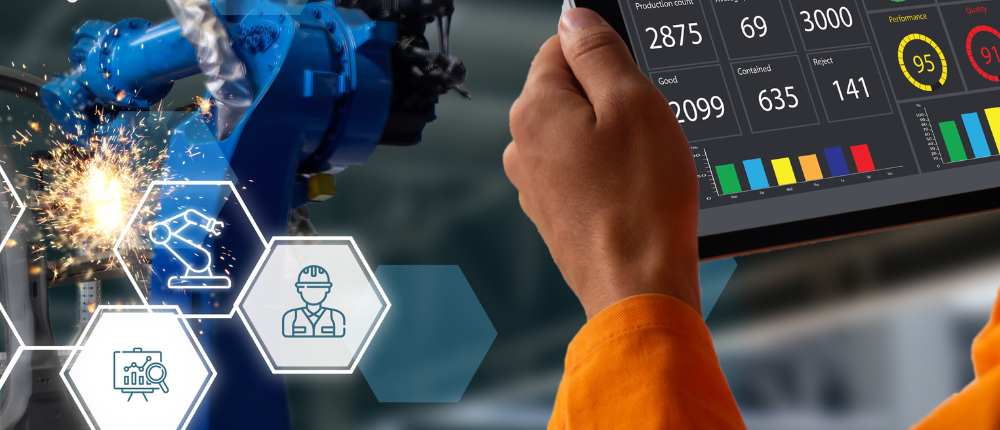Deep Learning Architectures for NLP Applications
Natural language processing (NLP) refers to the branch of computing that deals with the interaction between computers and humans using tongue. The goal of NLP is to urge computers to know, interpret, and manipulate human language.
Deep learning has emerged as a strong approach for NLP. Deep learning uses neural networks with many hidden layers to find out representations of knowledge with multiple levels of abstraction. This allows deep learning models to learn complex functions that map input data, such as text, to an output, such as a label or category.
Deep learning has transformed the field of NLP by achieving state-of-the-art results on a wide variety of NLP tasks.
Some of the most commonly used deep learning architectures for NLP include recurrent neural networks (RNNs), convolutional neural networks (CNNs), recursive neural networks, memory networks, attention mechanisms, and Transformer networks.
However, it’s important to note that while these architectures provide a solid foundation, leveraging specialized expertise can often enhance their effectiveness. For instance, incorporating advanced techniques offered by specialized NLP service providers like Luxoft’s Natural Language
Processing services (https://www.luxoft.com/services/natural-language-processing) can significantly augment the capabilities of these models.
This article provides an overview of these key architectures and explores how additional expertise and services can amplify their impact in real-world NLP applications.
Recurrent Neural Networks
Recurrent neural networks (RNNs) are a type of neural network architecture well-suited for processing sequential data such as text or speech. RNNs have an internal memory that captures information about what has been seen so far in the sequence. This gives RNNs the ability to develop understanding of context and perform tasks like language translation that require remembering long-term dependencies.
Some key RNN architectures used in NLP include:
Long Short-Term Memory (LSTM)
LSTMs were designed to address the vanishing gradient problem faced by traditional RNNs. They have a more complex structure with multiple gates that regulate the flow of information. This allows LSTMs to better preserve long-term dependencies in sequence data. LSTMs excel at tasks like language modeling, sentiment analysis, and speech recognition.
Gated Recurrent Units (GRU)
GRUs are a variation on LSTMs that simplify the architecture while still addressing the vanishing gradient problem. They combine the forget and input gates into a single “update gate”. GRUs can perform similarly to LSTMs on many tasks while being more computationally efficient.
Bidirectional RNNs
Bidirectional RNNs consist of two RNNs stacked together – one processes the sequence forwards and the other backwards. This gives the network full context when processing each element in the sequence. Useful for tasks like named entity recognition.
Overall, RNN architectures like LSTMs and GRUs have proven highly effective for many NLP tasks involving sequential text data. Their built-in memory allows them to model context and perform complex language understanding.
Convolutional Neural Networks
Convolutional neural networks (CNNs) are a specialized sort of neural spec optimized for processing data with a grid-like topology, like 2D image data. Unlike standard feedforward neural networks, CNNs utilize convolutional layers that apply convolutional filters to the input data to extract high-level features.
Some key aspects of CNN architectures:
- Convolutional layers convolve their input with a collection of learnable filters and pass the result on to the subsequent layer. Each filter activates when it detects a specific pattern or feature in the input. Stacking convolutional layers allows the network to learn hierarchical feature representations.
- Pooling layers downsample the input representation to reduce its spatial dimensions. This decreases computational requirements and controls overfitting. Common pooling operations include max pooling and average pooling.
- Fully-connected layers connect every neuron from the previous layer to each neuron within the next layer. These layers interpret the high-level feature representations learned by the convolutional layers. The final fully-connected layer outputs the class scores.
CNNs are commonly applied to visual recognition tasks like image classification and object detection. By learning spatially distributed feature representations, CNNs can identify visual patterns with fewer parameters than fully-connected networks.
For NLP, CNNs can capture semantic relationships between words based on their relative positions, analogous to how they detect spatial relationships in images. CNNs have been applied successfully to text classification, sentiment analysis, and other NLP tasks. 1D convolutional filters can convolve over the word embeddings in a sentence to learn phrase-level feature detectors.
Other CNN architectures like byte-level CNNs and character-level CNNs have also been explored for NLP. These operate on raw text bytes or characters as input, learning representations of words and subword units automatically. A major advantage is the ability to handle out-of-vocabulary words naturally.
So in summary, CNNs are beneficial for NLP problems involving local spatial relationships, like sequences or n-grams of words. Their translations invariant feature learning capabilities allow CNNs to recognize meaningful word patterns from raw input text.
Recursive Neural Networks
Recursive neural networks (RNNs) are a type of deep learning model well-suited for processing sequential data such as natural language. RNNs make use of recursive architectures to operate on structure such as parse trees.
The idea behind RNNs is to share parameters across a model graph to efficiently process variable-length inputs. This allows RNNs to generalize to sequences larger than what was seen during training.
A key component of RNNs is the recurrence relation, which recursively computes the hidden state using the previous hidden state and input. This allows information to persist in the network’s memory.
Some common applications of recursive neural networks include:
- Natural language processing: RNNs can model the syntactic structure of sentences for tasks like parsing. By learning a dense feature representation, RNNs can also be applied for sentiment analysis.
- Computer vision: RNNs have been used for recognizing scenes and objects in images by recursively encoding spatial relationships.
- Time series analysis: The recurrent architecture allows RNNs to effectively model sequences, making them useful for forecasting and prediction tasks.
- Speech recognition: RNNs can learn acoustic models for phonetic transcription of speech audio.
Overall, recursive neural networks are architecturally well-suited for problems involving sequential, hierarchical data. Their parametric efficiency and ability to model long-range dependencies make RNNs a versatile deep learning technique for NLP.
Recursive Neural Tensor Networks
Recursive neural tensor networks (RNTNs) are extensions of standard recursive neural networks that can capture semantic compositionality. They were introduced by Richard Socher et al. in 2013 as a novel architecture for sentiment analysis and outperformed previous recursive neural networks on multiple datasets.
The key difference between RNTNs and standard recursive neural networks is the incorporation of tensor-based composition functions. Rather than using a standard neural network layer to combine child vectors, RNTNs introduce a tensor-based composition function that can account for the interactions between input vectors.
Specifically, given two child vectors, the parent vector is computed as:
parent = f(W[c1, c2] * [c1; c2] + V * [c1; c2] + b)
Where W is a tensor, V is a matrix, b is a bias vector, and f is an element-wise activation function like tanh. The tensor W allows the model to directly capture interactions between the two child vectors c1 and c2.
This lets RNTNs represent more complex compositional semantics than a standard neural network layer. For example, it can learn that “not good” conveys negativity but “not bad” conveys positivity. The tensor-based composition can capture how the meaning of “not” interacts with “good” vs “bad”.
RNTNs have been applied successfully to various NLP tasks involving semantic compositionality:
- Sentiment analysis – Classifying the sentiment of sentences based on how word meanings compose
- Relation extraction – Identifying relationships between entities in sentences
- Semantic similarity – Measuring sentence similarity based on meaning
The tensor-based compositional functions in RNTNs allow them to learn more complex semantic representations than previous recursive neural networks. This makes RNTNs powerful models for NLP applications involving understanding compositional semantics.
Memory Networks
Memory networks are a class of neural network architectures that incorporate a memory component for learning algorithms. The key characteristic of memory networks is the use of a memory bank that can be read from and written to.
In memory networks, there are typically two main components – a memory component and a model component. The memory stores knowledge about the input in an organized, quickly accessible way. The model uses the memory to reason about the inputs and make predictions.
The memory can take different forms like a matrix, graph, or array. But it serves as a form of storage of long-term knowledge required for the task. The model is usually a neural network that interacts with this memory. It reads from the memory, writes to it, and uses it to answer questions or make decisions.
This architecture is well-suited for tasks requiring reasoning from a knowledge base or context, like question answering and dialogue systems. For QA, the memory can store facts that are relevant to answering the questions. The model can then reference this memory bank when generating answers to questions, allowing it to draw inferences between facts.
In dialogue systems, the memory can encode the context from previous sentences and exchanges. The model can use this to track the context of the conversation and respond appropriately. Storing this context in memory allows the system to have more natural, coherent dialogues.
In summary, memory networks are an important architecture for natural language tasks like QA and dialogue that require relational reasoning and long-term memory of context. The memory component allows models to store large amounts of knowledge and perform inference over that learned memory.
Attention Mechanisms
Attention mechanisms have become an integral part of many state-of-the-art deep learning models for NLP. Attention allows models to focus on the most relevant parts of the input when generating a specific output.
For example, in neural machine translation, attention helps the model look at the most relevant words in the source sentence when generating a word in the target sentence. It learns to assign an importance weighting to each word in the input sentence based on how relevant it is to predicting the current output word. This provides context and ensures accurate translation.
Attention has also been very useful for abstractive summarization. The model learns to pay attention to the most salient parts of the document that should be included in the summary. This allows the model to generate a summary focusing on the key details rather than simply extracting sentences.
Similarly for question answering, attention focuses on the parts of a passage that are most relevant to the question. This provides better context when extracting or generating the right answer compared to models without any attention mechanism.
Overall, attention has led to remarkable improvements in many NLP tasks by enabling models to selectively focus on the most useful parts of their input while generating the output. The flexibility of attention mechanisms has made them ubiquitous in state-of-the-art deep learning architectures for NLP.
Transformer Networks
Transformer networks were introduced in 2017 and have become the dominant architecture for many sequence modeling tasks in natural language processing. The key innovation of transformers is the usage of an attention mechanism in place of recurrence (as in RNNs) or convolutions (as in CNNs).
The transformer architecture is based entirely on attention mechanisms, eliminating recurrence and convolutions entirely. The model consists of an encoder and a decoder. The encoder maps the input sequence to a continuous representation using multiple layers. Each encoder layer has two sub-layers:
- Multi-head self-attention – relates different words in the input sentence to compute a representation of the full sentence.
- Position-wise feedforward network – a simple feedforward network applied to each word independently.
The decoder generates the output sequence token by token, using multiple decoder layers. In addition to the two sub-layers used in the encoder, the decoder inserts a third sub-layer that performs multi-head attention over the encoder outputs. This allows the decoder to focus on relevant parts of the input sequence as it generates each word.
Transformers use positional encodings to represent word order, added to the input and output embeddings. No recurrent or convolutional operations are used, allowing for highly parallel processing during training.
Transformers have driven new state-of-the-art results in multiple domains including machine translation, text summarization, question answering and many other NLP tasks. Key advantages include the flexibility to expand to very large datasets and the ability to model long-range dependencies in sequences effectively. Transformers and self-attention are an essential part of the deep learning toolkit for NLP.
Conclusion
Deep learning has enabled remarkable advances in natural language processing through the development of powerful neural network architectures. In this piece, we explored some of the most impactful architectures that have driven progress in NLP.
Recurrent neural networks formed the foundation for modeling sequence data, with LSTM and GRU networks overcoming limitations of simple RNNs. LSTMs remain a go-to choice for many sequence modeling tasks today. Convolutional neural networks brought about new ways to represent input through learned filters, while also reducing computational complexity.
More recent networks have built upon these fundamental architectures. Recursive networks handle the hierarchical nature of language through tree-structured architectures. Neural tensor networks enhance this with tensor-based compositions for richer representations. Memory networks augment RNNs with an external memory component to better model context. Attention mechanisms allow models to focus on the most relevant parts of their input.
Currently, Transformer networks are one of the most promising architectures for NLP. By relying entirely on attention mechanisms instead of recurrence, Transformers have achieved state-of-the-art results across a wide range of NLP tasks while also being highly parallelizable. Graph neural networks are an emerging architecture that encodes grammatical syntax for stronger language understanding.
As we look ahead, developing more interpretable and data-efficient networks remains an important direction. Architectures able to learn richer representations of language meaning and structure will be key for advancing natural language understanding. Continued innovation in neural network design will drive new breakthroughs in what is possible with NLP.












